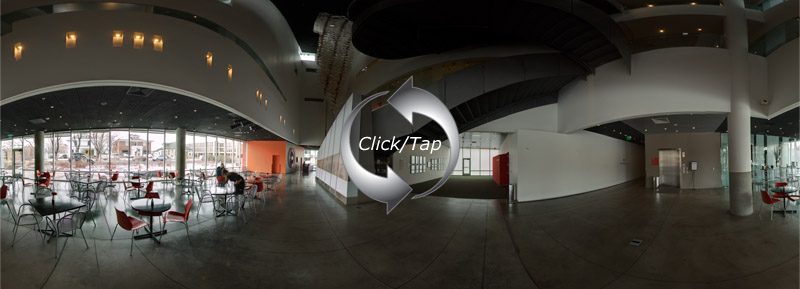Saturday Afternoon Ice Fishing Panorama: Madison

Panoramas and photos from Saturday’s Pro-union & Tea Party rallies at the Capitol can be seen here.
Outdoor Art

Packer Fans

The “National Insecurity” of Imported Oil
Getting America off imported oil is always urged in the context of national security. No matter how often that refrain is repeated, however, it always points toward how much imported oil American motorists use.
It’s never about the amount of oil imported into the United States, refined into numerous products and shipped back out of the country. Nor are people arguing that we need to quit using imported oil for manufacturing concerns – like making fertilizers to grow corn, to make into ethanol to put into our gas, so we can quit importing oil. (That’s the most comical circular argument currently making the rounds.) But we also use oil for things like asphalt for our roads, and in the plastics industry, and even the most ardent “get America off imported oil” advocates don’t talk about constraining those industries.
In reality, the country from which we import the most oil is Canada. And I’m fairly certain that we aren’t too worried about the national security aspect of bringing that oil into America, now or in the future. Yet we’re still hearing the constant mantra that this is a national security issue, and that’s what troubles me most. And, if you own one of the nation’s 240 million vehicles, the “national insecurity of imported oil” refrain should trouble you, too.
How the crisis catapulted us into the future
Did the financial crisis change very much? That was my question as I went to the annual meeting of the World Economic Forum in Davos last week. The answer is: yes. Above all, it has accelerated the arrival of our future. Even for the winners, this is quite a shock.
It is three and a half years since the financial crisis began and a little more than two years since it reached its worst. Bob Diamond, chief executive of Barclays, gave the financial sector’s thanks to governments for the rescue. Now the mood is one of wary optimism. According to the International Monetary Fund’s World Economic Outlook update, global output grew in 2010 by 5 per cent, at purchasing power parity, and 3.9 per cent, at market exchange rates. This contrasts with declines of 0.6 per cent and 2.1 per cent, respectively, in 2009. The IMF expects growth to slow only slightly to 4.4 per cent at PPP and 3.5 per cent at market exchange rates, in 2011. Optimism continues to reign.
With the crisis fading into memory, how will historians assess its legacy? Journalists do not have the luxury of distance. So here are my guesses. I will start with possible turnrounds.
The crisis was neither the beginning of a depression nor the end of capitalism. But it has caused a tightening of financial regulation, particularly of banks, though this has occurred within the pre-existing intellectual and institutional framework. After three decades of deregulation, movement is in the opposite direction, though not without resistance.
Angela in Wunderland: What Germany’s got right, and what it hasn’t
THE West has rightly marvelled at China’s economic miracle. Less noticed is a minor miracle in its own midst. It is time to pay attention to Germany’s new Wirtschaftswunder.
Germany had a savage recession as manufacturing orders dried up, but its economy has since bounced back strongly, expanding by 3.6% last year, far faster than most other rich economies. For sure, this was partly a “bungee effect” after a particularly deep downturn, but it is no one-year wonder. By several measures, including keeping unemployment down (it is at its lowest since 1992) and the prosperity reflected in the growth of GDP per head, Germany was the star performer among the rich G7 countries over the past ten years (see article). Germans entered 2011 in their most optimistic mood since 2000, according to Allensbach’s polls. Business confidence is at its highest since the Ifo institute began tracking it 20 years ago.
What’s Germany’s secret? It helps that the country did not experience a property or credit bubble, and that it has kept its public finances admirably under control. But above all Germany’s success has been export-driven: unlike most other big rich economies it has maintained its share of world exports over the past decade, even as China has risen.
Aung San Suu Kyi
The night before I am due to meet Aung San Suu Kyi, I take a battered taxi to the ancient Shwedagon Pagoda where it all began. It was here on an August morning in 1988 that the daughter of General Aung San, Burma’s independence hero, gave her first big speech, an address that was to plunge her into the cauldron of Burmese politics.
Although she was naturally reserved and the crowd was extraordinarily large – anything between 300,000 and 1m people – she spoke without apparent fear. Behind her was a portrait of her father, the Bogyoke, or “big leader”, assassinated at the age of 32, only months before his dream of Burmese independence was realised.
“Reverend monks and people,” Suu Kyi, then 43, began, asking for a minute’s silence for the 3,000 democracy protesters gunned down or hacked to death in that momentous month of revolution and suppression. “I could not, as my father’s daughter, remain indifferent to all that is going on,” she said, launching what she called “the second struggle for national independence”. Although she sought reconciliation over conflict, the underlying message was clear. Her father had liberated Burma from the British. She would help liberate it from Burma’s own generals.
GOP pushing for ISPs to record user data
he House Republicans’ first major technology initiative is about to be unveiled: a push to force Internet companies to keep track of what their users are doing.
A House panel chaired by Rep. F. James Sensenbrenner of Wisconsin is scheduled to hold a hearing tomorrow morning to discuss forcing Internet providers, and perhaps Web companies as well, to store records of their users’ activities for later review by police.
One focus will be on reviving a dormant proposal for data retention that would require companies to store Internet Protocol (IP) addresses for two years, CNET has learned.
Tomorrow’s data retention hearing is juxtaposed against the recent trend to protect Internet users’ privacy by storing less data. Last month, the Federal Trade Commission called for “limited retention” of user data on privacy grounds, and in the last 24 hours, both Mozilla and Google have announced do-not-track technology.
Amazing. I thought the economy was job #1 for the Republicans.
Warning!

A “shocking” hotel scene.
